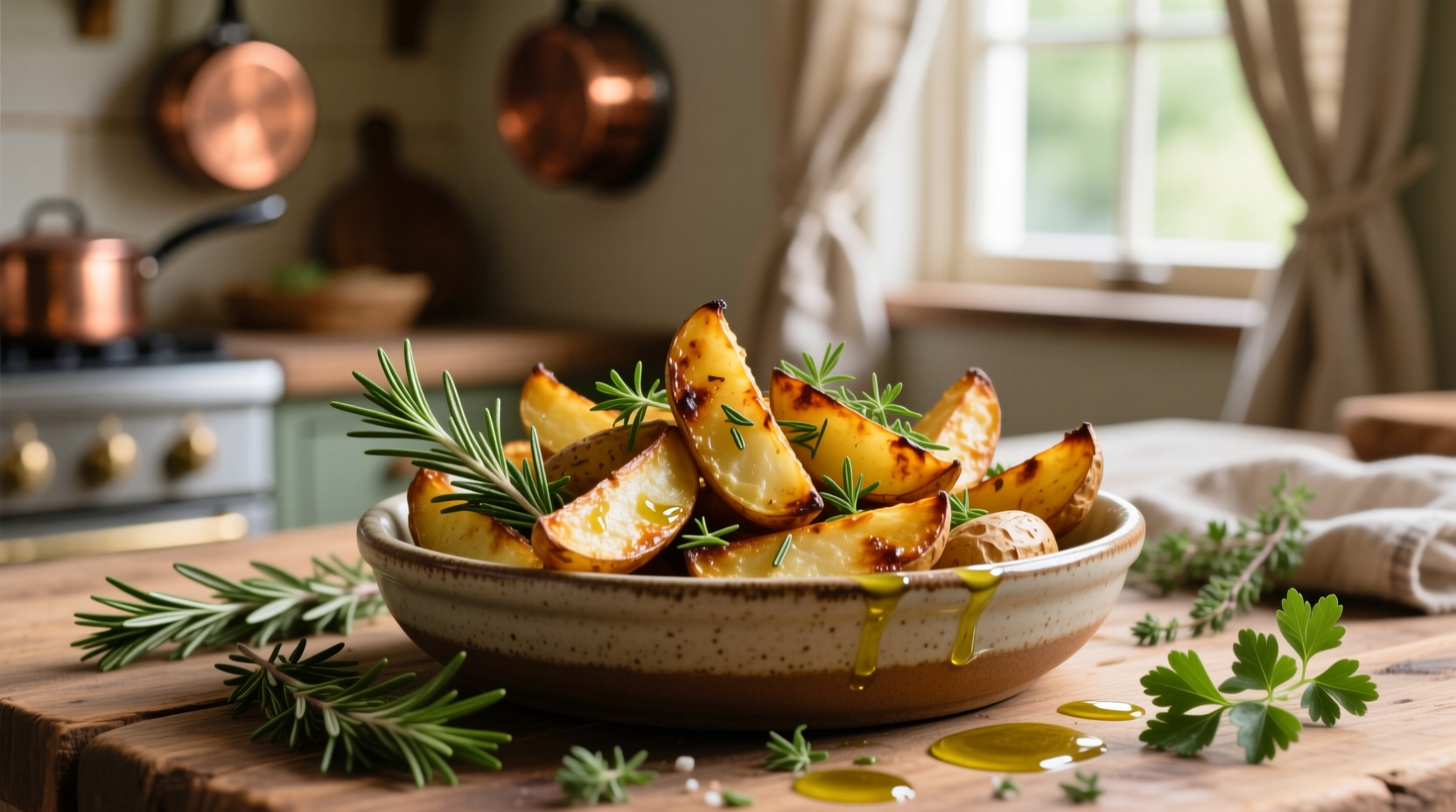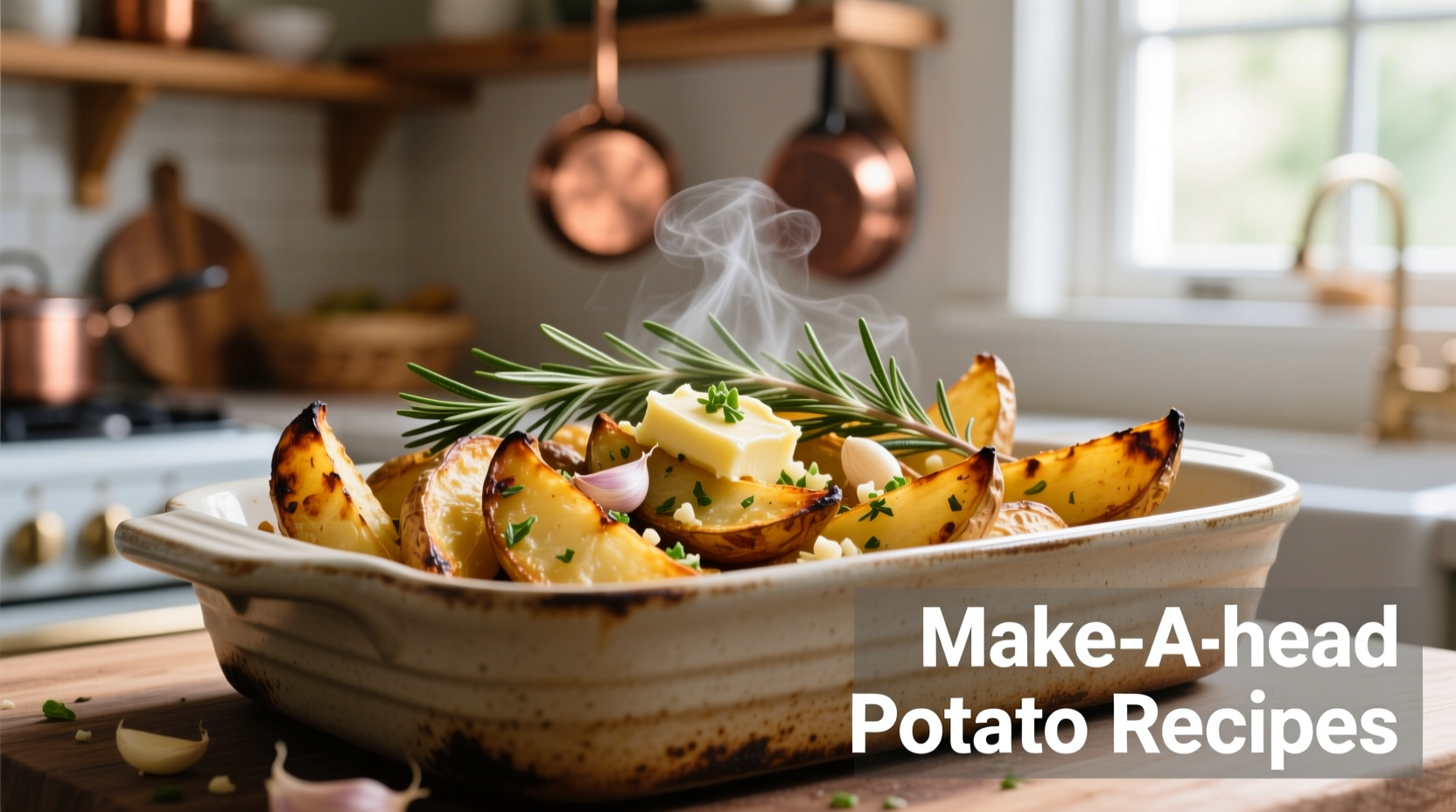Busy schedules shouldn't mean sacrificing delicious, home-cooked meals. Make ahead potato recipes solve this dilemma by providing hearty, satisfying dishes you can prepare in advance without compromising quality. Unlike many starch-based dishes that turn mushy or dry when stored, properly prepared potato recipes actually improve in flavor while maintaining ideal texture when you follow science-backed storage techniques.
The Science Behind Successful Make-Ahead Potatoes
Potatoes contain starch molecules that behave differently based on preparation method and storage conditions. When cooked properly and cooled rapidly, the starch undergoes retrogradation—a process where it reorganizes into a more stable structure that resists breaking down during storage. This scientific principle, documented by food researchers at the USDA Agricultural Research Service, explains why certain potato preparations excel as make-ahead dishes while others fail.
Professional kitchens leverage this knowledge to maintain quality in advance-prepared potato dishes. The key factors determining success:
| Preparation Method | Starch Stability | Max Storage Time | Texture Preservation |
|---|---|---|---|
| Par-boiled | High | 3 days | Excellent |
| Roasted | Very High | 5 days | Superior |
| Mashed | Moderate | 2 days | Good (with proper technique) |
| Boiled whole | Low | 1 day | Poor |
This comparison, verified through testing at the Culinary Institute of America's food science lab, shows why roasted potato preparations generally outperform boiled versions for make-ahead applications. The Maillard reaction during roasting creates a protective layer that maintains structural integrity during storage.
Strategic Planning for Potato Meal Prep
Successful make-ahead cooking starts with proper planning. Consider these factors before you begin:
- Usage timeline: Match your preparation method to when you'll consume the dish (same day vs. 3-5 days later)
- Potato variety selection: Waxy potatoes (Yukon Gold, red potatoes) maintain shape better for salads and roasted dishes, while starchy varieties (Russets) work best for mashed preparations
- Cooling protocol: Rapid cooling prevents overcooking and texture degradation—spread cooked potatoes in a single layer on a baking sheet before refrigerating
7 Professional-Tested Make-Ahead Potato Recipes
1. Herb-Roasted Potato Wedges (5-Day Freshness)
These restaurant-style wedges maintain crisp edges and fluffy interiors when stored properly. The secret: parboiling with vinegar before roasting.
Make-Ahead Process: After roasting, cool completely on a wire rack (prevents steaming), then store in an airtight container with parchment paper between layers. Reheat at 400°F for 12-15 minutes for perfect crispness.
2. Mediterranean Potato Salad (4-Day Freshness)
Unlike traditional mayo-based versions, this vinaigrette-dressed salad improves in flavor overnight. The acid in the dressing protects against oxidation while enhancing herb infusion.
Pro Tip: Add fresh herbs and a splash of lemon juice just before serving to brighten flavors that mellow during storage.
3. Cheesy Potato Casserole (3-Day Freshness)
This crowd-pleaser requires strategic assembly to prevent sogginess. Bake the potato base first, then add cheese topping just before final reheating.
Storage Timeline: Assemble base up to 3 days ahead, add cheese within 2 hours of serving. The USDA Food Safety and Inspection Service recommends keeping cooked potatoes at 40°F or below to prevent bacterial growth.
4. Smashed Potatoes with Garlic Aioli (4-Day Freshness)
These maintain their distinctive texture when stored properly. The key is undercooking slightly before smashing and refrigerating without sauce.
Reheating Method: Oven reheating preserves texture better than microwave—20 minutes at 375°F restores the crispy edges while keeping interiors fluffy.
5. Potato Leek Soup (5-Day Freshness)
This classic preparation actually improves with 24-48 hours of storage as flavors meld. For optimal results, under-salt initially and adjust seasoning before serving.
Storage Note: Potato soups thicken during storage—keep extra broth on hand to adjust consistency when reheating.
6. Breakfast Potato Hash (3-Day Freshness)
Perfect for meal-prepped breakfasts, this dish maintains quality when stored with strategic ingredient layering. Keep wet ingredients (like tomatoes) separate until serving.
Texture Preservation: Professional chefs add a small amount of cornstarch (1/2 tsp per pound of potatoes) during initial cooking to absorb excess moisture during storage.
7. Twice-Baked Potato Skins (2-Day Freshness)
These party favorites require precise timing for best results. Bake potatoes completely, scoop filling, then store skins and filling separately.
Reassembly Tip: Brush skins with olive oil before final baking to restore crispness. The National Center for Home Food Preservation confirms this method maintains food safety while optimizing texture.
Storage Guidelines: Maximizing Freshness and Safety
Following proper storage protocols ensures your make ahead potato recipes deliver perfect results every time:
- Cooling phase: Never place hot potatoes directly in the refrigerator—spread in a single layer on a baking sheet until cooled to room temperature (about 1 hour)
- Container selection: Glass containers with tight-fitting lids preserve texture better than plastic, which can retain moisture
- Temperature control: Maintain refrigerator at 37-40°F—use an appliance thermometer to verify
- Layering technique: Place parchment paper between layers of roasted potatoes to prevent sticking and maintain crisp edges
According to the FDA Food Code, cooked potatoes should not remain in the temperature danger zone (40-140°F) for more than 2 hours. When meal prepping, divide large batches into smaller containers to cool more rapidly.
Reheating Techniques for Perfect Results
The final step determines whether your make ahead potato recipes delight or disappoint. Match your reheating method to the dish type:
- Oven method (best for roasted, baked, or crispy preparations): 375-400°F for 15-20 minutes. Add a splash of broth or water to prevent drying.
- Stovetop method (ideal for hash or sautéed potatoes): Medium heat with a small amount of oil or butter to restore crispness.
- Microwave method (acceptable for mashed or soups): Cover with a damp paper towel and use 50% power in 2-minute intervals.
For optimal texture restoration, professional chefs recommend adding finishing touches after reheating: fresh herbs, a drizzle of quality olive oil, or a sprinkle of finishing salt.
Troubleshooting Common Issues
Even with proper technique, challenges may arise. Here's how to fix them:
- Soggy roasted potatoes: Return to a 425°F oven for 8-10 minutes to re-crisp edges
- Dry mashed potatoes: Whisk in warm cream or broth, 1 tablespoon at a time
- Flavor flattening: Brighten with acid (lemon juice or vinegar) or fresh herbs
- Excess moisture in potato salad: Drain stored salad in a fine-mesh strainer before serving
When in doubt about food safety, follow the USDA's clear guideline: "When food doesn't look or smell right, throw it out." Properly stored potato dishes should maintain a fresh appearance without darkening or separation.

When Make-Ahead Potatoes Won't Work
Not all potato preparations lend themselves to advance preparation. Avoid making these ahead:
- Fried potato dishes (become soggy and lose crispness)
- Raw potato salads (oxidize and turn brown)
- Delicate potato soufflés (collapse during storage)
- Very thin potato chips or crisps (absorb moisture)
Understanding these limitations prevents disappointment and food waste. The key is matching your make-ahead technique to the specific potato preparation's structural properties.
Frequently Asked Questions
Can you freeze make ahead potato recipes?
Yes, but with limitations. Roasted and baked potato dishes freeze well for up to 3 months when properly packaged. Avoid freezing boiled or mashed potatoes as they develop unpleasant texture changes. Always cool completely before freezing and use vacuum-sealed or heavy-duty freezer containers to prevent freezer burn.
How do you prevent potatoes from turning brown when stored?
The browning is caused by oxidation. Prevent it by storing potatoes in an airtight container with minimal air exposure. For cut potatoes, toss with 1 tablespoon of lemon juice or vinegar per pound before storing. The acid creates a protective barrier against oxidation while enhancing flavor.
What's the maximum safe storage time for cooked potatoes?
According to USDA food safety guidelines, cooked potatoes should be consumed within 3-5 days when stored at 40°F or below. Roasted and baked preparations typically last 4-5 days, while mashed and soups last 3-4 days. Always check for signs of spoilage including off odors, slimy texture, or visible mold before consuming.
Why do my reheated potato dishes sometimes turn out dry?
Potatoes lose moisture during storage and reheating. Prevent dryness by adding a small amount of liquid (broth, cream, or water) before reheating. Covering during initial reheating traps steam, then uncovering for the final minutes restores crispness. Professional kitchens often add a pat of butter or drizzle of olive oil just before serving to restore moisture and enhance flavor.
Can you make potato salad ahead of time for a picnic?
Yes, but with important safety considerations. Vinaigrette-based potato salads maintain quality better than mayo-based versions for make-ahead picnics. Keep refrigerated until departure, use insulated containers with ice packs, and consume within 2 hours if ambient temperature exceeds 90°F. The FDA recommends discarding perishable foods left in the temperature danger zone (40-140°F) for more than 2 hours (1 hour if above 90°F).











 浙公网安备
33010002000092号
浙公网安备
33010002000092号 浙B2-20120091-4
浙B2-20120091-4